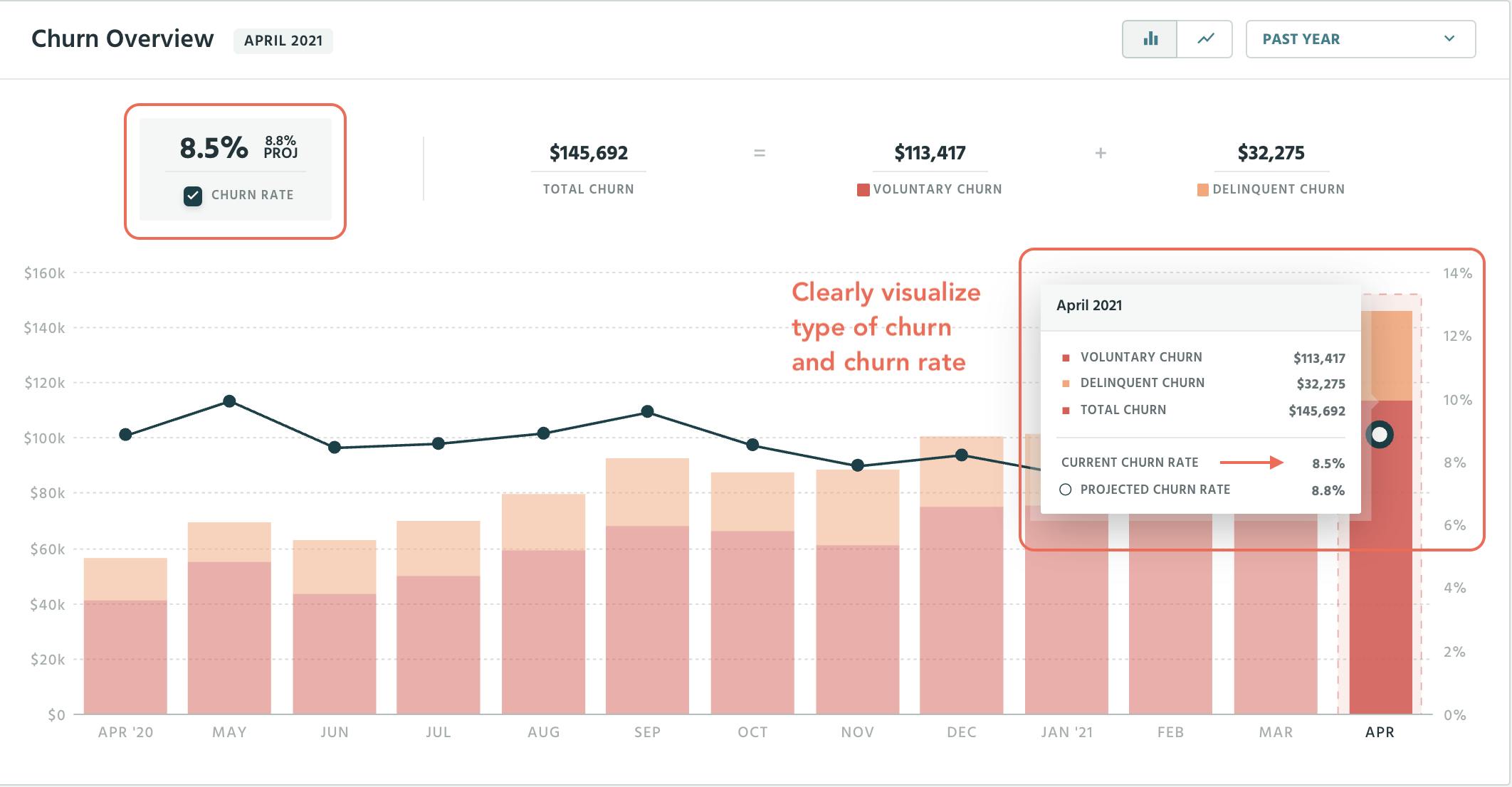Learn how to make the most of cancellations to reduce churn, from how to think about your exit surveys to getting a better pulse on your customer base.
Having a high churn rate is a surefire way to kill your SaaS business. Thankfully, there are steps you can take toreduce churn. One of the most important things you can do is to ensure high customer satisfaction with your product. One way of doing that is to examine the reasons why people churn in the first place. Cancellation and exit surveys are a great way to learn what is making your customers leave.
What are customer exit surveys?
Customer exit surveys are questionnaires that are sent to customers when they cancel your service. By sending the customer cancellation survey shortly after they cancel, you'll be able to get their thoughts while their reasons for cancelling are fresh on their minds. The goal of your exit survey questions should be to understand not only why they left, but also get a better idea of their overall customer experience with your product. Having this knowledge can help you improve user experience and prevent future customers from churning.
4 exit-survey best practices to get responses
Not all exit surveys are created equal. Like with most things in business, there's a right way and a wrong way to go about doing things. The tips below will help you craft an exit survey that provides you with the answers you need, remains respectful of the customer, and helps them to open up about their experience so they provide you with actionable insights so you can work on a better product-market fit.
- Understand your customer segments
Your customer segments should be driving every communication that you have with your customer base. They inform you of the tone of voice that will get the most results from your specific customers. Even if they are no longer your customer, you should continue using what your customer segments taught you when you communicate with them. - Keep questions short and to the point
Someone who has cancelled your service isn't going to want to spend a lot of time trying to figure out what you are asking them. By keeping your questions short and to the point, you are able to get a higher response rate. Additionally, shorter, broader questions will allow the customer to speak more in their own words, providing more useful information than you might get from highly specific, often leading exit survey questions. - Communicate with empathy
The customer has canceled, but you should still treat them with empathy and understanding. Not only because it's the right way to treat people, but because it's the best way to get a response. Additionally, they may decide to become a customer again at some point, they will share their experience with other potential customers.
- Still deliver value
Every interaction with a customer should be, in part, about showing off the value you offer. Showing the churned customer that their opinion matters to you and that their feedback will be taken into consideration is one way of doing that. You could also offer to help them with difficulties they may have had with your product, which will further show your value, and may even recover the customer.
How to turn your customer exit surveys into an opportunity
Taking exit surveys doesn't accomplish much if you don't do anything with the result. So the next step is to take your cancellation surveys and use them to turn the negative situation of losing a customer into a positive situation. There are a number of ways to go about doing this.
Attempt to recover the customer (tactfully)
The best situation is that you are able to recover the customer. As part of your exit survey, you can offer links to help the customer overcome a difficulty. This may be enough to save the account. Often, it won't be. For larger accounts, it's worth the time to reach out to the customer directly as a result of their feedback if you believe you can resolve their issues. Just remember to continue practicing empathy and don't let the customer feel pressured.
Use exit surveys to get customer exit interviews
Exit surveys are great, especially when you ask open-ended questions that let the user provide you with actionable feedback. But they are very one-sided, you aren't afforded the opportunity for follow-up questions. Asking for an exit interview after the cancellation survey will let you dig deeper into the reasons people cancel, so you can get even more actionable information from them.
Get customer feedback to improve your product
Once you understand the reasons people are churning, you need to address them. When you've done enough satisfaction surveys and interviews, you'll begin to notice patterns in the problems people are having with your product. By addressing those problems, you can improve your product and remove a reason for churn.
3 questions to ask in your customer exit survey
If you're going to conduct an exit survey that provides you with the type of information you'll need to reduce churn, you'll need to be asking the right questions. The three questions below are an example of something that should be in every customer/client exit survey. You can ask more if you'd like specific details related to your product, but don't overwhelm or ask too much of the former customer. A cancellation survey that's too long is likely to just be skipped over.
- What made you cancel your subscription?
This is the obvious question. But how to ask it might not be so obvious. Businesses often make the mistake of giving a multiple choice answer here. This might not even cover the reasons the person left, and certainly doesn't allow them to be specific. When you do that, you'll likely end up with an even distribution of each answer, which isn't helpful at all. It's more work to read through exit survey responses, but allowing the customer to speak in their own words gives better and more valuable insights. - What could we have done differently?
This could be considered the same as the previous question, simply reworded. It's still a good idea to ask it because often rewording a question will change the answer. This is especially true when both questions are asked as a part of an exit survey. Since they don't want to repeat their previous answer, they'll be a little more specific when answering this one. - Which area/feature do you think we can improve on?
This is a more specific question. The others will provide plenty of actionable information from customers who are willing and able to articulate their problems. This one, because of its specific nature, means that even vague answers can be turned into something useful.
Reduce churn automatically
Exit surveys help to prevent future churn, but they are far from automatic. A fair amount of work goes into reading the surveys and drawing conclusions from them. This is especially true when exit interviews are conducted. There are some steps you can take; however, that are much more automated. Let's look at a few ways ProfitWell can help with that.
Better understand customer behavior with ProfitWell Metrics
There are often warning signs that a customer is going to churn. For example, customers who are paying for a service but not logging into it very often, are probably not going to keep paying for it for long. ProfitWell Metrics subscription analytics allows you to see which users are not engaging well with your product and gives you a chance to proactively reach out to them and help resolve any issues they may have.
You'll also be able to gather other useful bits of data. Which features do your customers engage with the most? How accurate are your customer segments? By getting a granular look at how customers use your product, you'll be able to make improvements and determine which areas need the most focus so customers remain happy with the product you are offering.
Model your churn accurately with ProfitWell Metrics
If you're going to take steps to reduce churn, then you're going to need to accurately model it. As your churn reduction strategies are put into place, ProfitWell Metrics will give you detailed information about your churn rates so that you can measure the success of your programs. This also allows you to A/B test different retention strategies to see which ones perform the best.

Use ProfitWell Retain to prevent involuntary churn
A surprisingly large number of customers churn due to failed payments. This type of involuntary churn can be effectively managed through ProfitWell Retain, which utilizes powerful algorithms built on billions of data points about why payments fail and how to best recover those accounts and boost customer retention. ProfitWell Retain is also risk-free, as you only pay for results.
Exit surveys FAQs
How to reduce voluntary churn?
In order to reduce voluntary churn, you need to ensure that everyone gets the most value from your product as possible. This means having a good onboarding strategy to help new users learn how to use the software, as well as and constant feedback. It also means paying attention to the reasons that customers who cancel have decided to do so.
How to respond when a customer cancels their subscription?
Remain respectful of their decision and don't try to make them feel guilty for leaving. However, collecting feedback, by way of an exit survey, so you can understand why the customer cancelled is a good way to improve your product or service. And in some instances, win back some customers.
How to win back a canceled customer?
Communication is key. Send a succinct, targeted exit survey that forces the cancelled customer to pick the biggest and smallest reasons for churning. Other times, you need to more directly address the former customer's concerns based on direct feedback from them. But you must communicate and be able to offer a solution to their problem.
How do you survey a lost customer?
Soon after the customer churns, send a highly personalized email to thank them for giving your product a chance, and include an open-ended question: What made you cancel.




